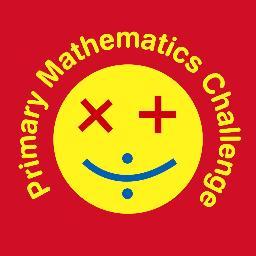
Teaching Division
There are a few different things to look out for when teaching division. Some of them include using a variety of techniques to get your students thinking and understanding. In addition to that, you should also be prepared to deal with a variety of different types of division problems.
Chunking
Chunking is a strategy for dividing tasks into manageable units. It helps students learn and retain information more effectively. This is the opposite of the multiplication method, which divides numbers into equal parts.
The use of chunking has been promoted in schools over the last 10-12 years. However, there is evidence that students make more mistakes using the chunking technique than the old ‘bus stop’ method.
Chunking is a good way to record repeated subtraction in written form. However, it is important to teach students how to apply the technique to different types of problems.
Teaching Division the Right Way
For example, a problem such as 432/16 can be broken into two divisions by using factors of 4. Students can then perform the same process for another number, for instance, 38.
A good chunking strategy will encourage students to use their times tables. Many children are familiar with the 10x table and can use this to break up large numbers.
The use of chunking also makes the learning of higher-order thinking skills easier. Using a combination of in-class and out-of-class activities can support students’ cognitive needs and social interests.
Explicitly teach and model how to solve different types of division word problems
When teaching division, one of the best ways to teach students how to do it is to give them practice. One way is to use word problems. Word problems are a great way to show students how to solve problems, but they are also a great way to test their critical thinking skills.
Word problems have different types, depending on the problem. The most basic type of word problem is a grouping problem. In this type of problem, you are given a set of objects and are asked to divide them into three equal groups.
Another type of word problem is the join word problem. This involves comparing two sets of objects and highlighting or writing down the equation for the answer. You can also use a diagram to represent the information.
Word problems are an important component of math instruction because they provide practice for turning situations into numbers. Some of the most common types of word problems involve measurement division.
Explicitly teach and model how to divide a three or four digit number by a single digit number
A three or four digit number divided by a single digit number can be a daunting task. With the right tools and the appropriate instruction, it can be done. In fact, there are many ways to do it. Here are a few.
First, the best way to go about it is to take a stab at the task. Try to write out the division process on a piece of paper. Next, challenge your students to see how they can do it mentally. To make sure that your students are on the right track, you could even have them perform a brain teaser.
Next, you might want to have your students complete a brain teaser with numbers. This will help your students learn a bit more about place value. After this, you might want to challenge them to find a real world number to practice with.
You may also want to do a quick search on the internet for the best online place value calculators. These calculators are easy to use and will let you compare numbers with different values.
Teaching Division – Bringing maths into the real world
A growing number of educators are using real-world contexts to enhance student learning. These experiences help students better understand the world and encourage them to become more engaged with math.
Real-world contexts often come in the form of hands-on activities. For instance, an English teacher facilitated a discussion about the Holocaust by using math. This allowed students to visualize the tragedy. The lesson also encouraged open dialogue.
Another way to make math relevant to the real world is to integrate it into other subjects. Many teachers teach a variety of other subjects such as science and history, allowing students to use their mathematical reasoning outside of the classroom.
As technology becomes more accessible, more students are finding that they need to use math outside of the classroom. By incorporating these activities, teachers can engage students in problem-solving, boost their understanding, and change the mindsets of their students.
When students are engaged with a real-world connection, they see that mathematics connects to virtually any industry. They also gain an appreciation for the importance of math in the world, which will inspire them to become future problem solvers.

Teaching Long Division – How to Teach Kids to Multiply and Divide
If you’re teaching long division to your kids, you’re probably looking for ways to help them get it right. There are a number of different strategies to teach them this important skill. We’ll share some of them with you in this article.
Multiplication is the product of repeated addition, and division is simply the opposite.
There are two basic arithmetic operations: multiplication and division. Although they are often thought of as a single process, they are actually two separate procedures. Multiplication is the product of repeated addition, while division is the opposite.
It is possible to teach children multiplication and division by using visuals. This helps them to develop a deeper understanding.
In general, a student’s ability to multiply and divide multi-digit numbers will improve when they can perform the operation with fluency. To help students learn this, teachers should begin by teaching them the concept of multiples of one, and then work their way up to multi-digit numbers.
One of the earliest ways to introduce students to multiplication is by using skip-counting. This technique can be a fun game to play.
Carrying is not taught by rote – Teaching Long Division
Using rote memory to learn a fact is not a great idea. While this technique is useful for memorizing lists of information, it’s not good for mastering complex concepts.
There are several ways to teach the long division algorithm. One is to retell the steps in your own words. Another is to use manipulatives to teach the procedure. And yet another is to work with word problems.
In addition to the old adage of memorizing the most simplest formula, there are several other techniques that can be used to help students master their math courses. This list is by no means exhaustive. You should do what is best for your individual student.
Partial quotients is a “must-teach” strategy for multi-digit division
One of the most challenging concepts to master is multi-digit division. The big question is – what’s the best way to go about it? There are several good strategies that have been around for a while and a few newcomers. This article discusses some of the better ones. You’ll find the aforementioned exemplaires in this post, but if you’re looking for something more formal, you might want to take a look at the aforementioned Long Division Big Bundle. It contains nine sets of task cards that cover the gamut. Some of the aforementioned cards have interactive features such as a scavenger hunt, a quiz and the ability to view videos on demand.
Practice with three- and four-digit numbers – Teaching Division Strategies
If you are teaching long division to your students, you might want to give them some practice with three- and four-digit numbers. You can do so using a variety of resources. A video and a worksheet are two ways to make this happen. These two tools can help you identify and address gaps in your students’ knowledge.
One of the easiest ways to practice is to use area models. This is especially helpful for students who are visual learners. By modeling the division problem, your students can better understand the relationship between place value and the number of digits in each dividend.
Another strategy for practicing long division is to turn it into a game. Games help develop math skills and confidence. Make it as fun as possible.
Make a Ballpark Estimate before solving a math problem
Making a ballpark estimate before solving a math problem is an effective strategy. It forces you to think on your feet and slow down enough to ponder the question. You’ll be surprised how much better your answer turns out to be once you’ve done it.
The first time you tackle this type of problem, you may be tempted to jump right into the details. While this is a good idea, you’ll be wasting your time if you do it too quickly. A great way to avoid the pitfalls is to read the problem out loud, underline key words, and try to estimate your answer before you actually start calculating.
Using manipulatives to show how numbers can be split into equal groups
Using manipulatives to show how numbers can be split into equal groups can help children to understand multiplication and division. Whether a student is a struggling math learner or just has a general interest in these subjects, using manipulatives to illustrate these concepts can be helpful.
To demonstrate the process of multiplication and division, students can use maths cubes or other similar objects. Students can also create their own story problems, or they can discuss the process of division by sharing their observations and using mathematical language.
When using manipulatives to model dividing objects into equal groups, the goal is to create the same number of groups for both even and odd numbers. Once students can identify the number of groups, they can determine whether the number is even or odd. This serves as a foundation for repeated addition and multiplication.
